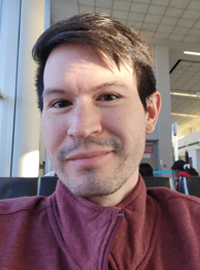 Fred Kaplan, MD
Fred Kaplan, MD
“I’ve seen about a thousand patients worldwide with FOP,” said Fred Kaplan, MD, a professor of Orthopaedic Molecular Medicine in the Perelman School of Medicine at the University of Pennsylvania. “Most of them are immobilized by the time they are 20. But this patient was not.”
Kaplan is arguably the world’s most prominent doctor treating FOP, Fibrodysplasia ossificans progressiva, a condition that causes people, beginning at an extremely young age, to form a “second skeleton.”
Starting as young as age 2, patients with FOP begin to have their muscles, tendons, and ligaments transform into bone, often due to minor injuries. A bump that commonly results in a bruise for the average child leads to catastrophic bone formation in a child with FOP that could completely lock a major joint. Any attempt to remove the extra bone just makes the situation worse, as it leads to waves of new bone formation.
With ribbons, sheets, and plates of unwanted bone forming over time, joints all over the body lock up. As a result, most people with FOP are confined to a wheelchair by age 30. The lock-ups can make it difficult to talk or even breathe. Life expectancy is brief, with most not making it through their 50s, even in best-case scenarios.
Yet the patient, Andrew Davis, who Kaplan saw for the first time at 21, had none of this. He’d never experienced a “flare-up” of intense inflammation that is a hallmark of FOP. He’d grown up playing baseball and soccer with all the bumps and bruises that come with them, but no resulting lock-ups.
But Davis’ genetic information clearly shows that he has FOP. And something Kaplan and his colleagues found in that genetic information could also be the key to developing a treatment that keeps others from the grip of FOP.
“This is a unique person, a unique patient,” Kaplan said.
Blindsided with a rare genetic diagnosis
 Andrew Davis
Andrew Davis
One morning in 2007, Davis woke up with a stiff, swollen neck that he eventually had biopsied by a doctor, who diagnosed it as fibromatosis, a benign growth that was then removed. When the swelling returned a year later, Davis saw a geneticist who took blood and noted that Davis had shortened big toes, which he would learn later are a signature sign of FOP.
It was on the way back from a different doctor that Davis got the call from the geneticist: The test showed that he had a mutation in the ACVR1 gene, something that Kaplan and Penn Medicine colleague Eileen Shore, PhD, a professor of Orthopaedic Research, discovered in 2006. ACVR1 is an important component in forming the body’s skeleton, and a mutation in it is the source of the out-of-control bone formation in FOP.
“It was a total shock,” Davis said.
In looking up the disease online—“the worst thing I could’ve done,” he admits—he became anxious about his future, even though he’d never experienced any of the symptoms every other FOP patient had growing up.
“I wasn’t much of a risk-taker growing up, it’s not like I was going hang-gliding,” Davis said. “But I did normal kid stuff.”
He decided to join an FOP support group and was eventually connected to Kaplan, who immediately noted something different at play with this patient. For one, he actually saw Davis walking around the waiting room and thought that there’d been a mistake. Maybe Davis didn’t have FOP.
“When I first saw Andrew, he was a healthy 21-year-old man,” Kaplan said. “He had the classic FOP mutation, but something appeared to be protecting him. And every other time I saw him in the years after, he still seemed to be protected.”
The missing fuse
Kaplan and his then colleague Robert Pignolo, MD, PhD, (then at Penn Medicine; now at The Mayo Clinic) eventually formed a hypothesis: What shielded Davis from the symptoms of FOP was the lack of an inflammatory trigger.
“We theorized that his FOP was like bomb without a fuse,” Kaplan said.
They happened to be doing a biomarker study in patients with FOP around the time they formed this hypothesis and included Davis.
“One of his inflammatory proteins was extremely low—lower than any FOP patient, and even lower than people in the general population,” Kaplan said. “That protein was MMP-9, an enzyme that is produced by inflammatory cells.”
After sequencing Davis’ genetic information, the only significant discoveries were the FOP mutation in ACVR1, and two in the MMP-9 gene. One of those MMP-9 mutations was determined to have an effect on the MMP-9 protein’s job, which is bone formation and inflammation.
To test their hypothesis that a mutation was shielding Davis, the researchers established mouse models of FOP that had impaired MMP-9 production and found that it stopped extra bone formation.
With that knowledge in hand, Kaplan and his colleagues looked to see if there was a medication available that inhibited the activity of the MMP-9 protein in the absence of a mutation in the MMP-9 gene. They found that tetracycline antibiotics, a relatively affordable treatment option for acne and other common conditions, did just that.
When they used minocycline, a tetracycline derivative, to treat mice who had FOP, extra bone formation was prevented. Further validation came from a monoclonal antibody against MMP-9 which also protected FOP mice from unwanted bone formation.
“We were excited. We were like, ‘Is this real?’” Kaplan remembers. “This was years of going step-by-step, seeing if one thing worked and then moving on to the next. It was remarkable.”
“I’m just excited. I’m thrilled.”
Kaplan, Pignolo, and their colleagues published a paper in the Journal of Bone and Mineral Research discussing their findings. Additional work will need to be done in the laboratory and, eventually, clinical trials to bring these findings to people. But Kaplan is optimistic about the work.
“This work illustrates that one patient can reveal critical molecular clues to disease that then unveil novel treatment strategies,” he said.
Davis is now 36 years old. He is still almost totally free from the condition, albeit that his neck still is a bit stiff. Discovering that he has a variation that’s been protecting him from the FOP mutation has given him some relief, knowing that his body likely won’t develop the same complications that others with FOP have. But he also said he experiences survivor’s guilt.
“Seeing people older than me and younger than me dealing with this horrendous genetic condition while I’m, all in all, ‘normal,’ that’s been very hard,” Davis said. “It’s a little lonely. I have my feet in two places.”
But the work of Kaplan, Pignolo, and the other researchers have provided Davis with some “peace” since he may be the key to a life-changing and life-extending treatment for FOP patients.
“I’m still in shock with this discovery,” Davis said. “People keep asking me about it, and it’s been a while, but I’m just excited. I’m thrilled.”